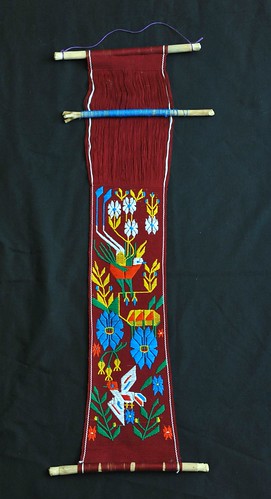Ct targets of O2(1Dg) [35]. Other O2(1Dg) targets include unsaturated lipids in the cytoplasmic membrane, which can be oxidized to form lipid hydroperoxides. Oxidation of cholesterol by O2(1Dg) results in the formation of a number of readily distinguishable oxidation products, especially hydroperoxides [36]. Enveloped viruses possess a lipid bilayer envelope derived from cellular membranes and embedded with viral proteins. These viral surface proteins are often glycosylated and play a crucial role in cell receptor recognition and viral entry into host cells. Therefore, enveloped viruses might be affected by O2(1Dg) in a manner similar to bacterial and animal cells. Indeed, we showed that the baculoviruses, as 101043-37-2 representative enveloped viruses, were efficiently inactivated when applied to the surface of the nanofiber textiles doped with 1 TPP and exposed to visible light for 30 minutes.Similar effects may also be expected for other enveloped viruses. The influenza virus envelope contains two surface glycoproteins: hemagglutinin, which is responsible for viral entry into the host cell and its release from endosomes, and neuraminidase, an enzyme that is essential for virus propagation due to its ability to cleave the sialylated virus receptor, thus releasing viral progeny. Zanamivir, a neuraminidase inhibitor, is one of drugs used to treat patients infected with the influenza virus. Wen-Hsien Wen et al. [37] showed that tetrameric zanamivir conjugates based on a porphyrin core structure, despite being less potent in inhibiting neuraminidase, are significantly more potent in inactivating influenza viruses. The authors attribute this effect to the high local concentration of the photosensitizer porphyrin, which generates O2(1Dg) in a close proximity to the virus surface. The nucleic acids in non-enveloped viruses are enclosed in protective, protein-only capsids. Capsids in non-enveloped viruses have simple symmetric structures and are formed from many identical subunits composed of one or several proteins. The protein-protein interactions among these subunits maintain a tightly packed, stable capsid structure that is able to survive exposure to extreme pH levels, harsh environmental conditions, proteolytic enzymes, or even strong detergents in some cases.Virucidal Nanofiber TextilesFigure 6. GSK -3203591 inactivation of the recombinant baculovirus on the surface of TPP-doped TecophilicH nanofiber textile. Cells infected with recombinant baculovirus eluate from the surface of the nanofiber textile after 30 minutes of irradiation (a, b, c) or with no irradiation (d, e, f). Cells infected with the baculovirus control eluate from the textile without TPP after 30 minutes of irradiation (g, h, i). MPyV VP1 protein (green) produced from the recombinant baculovirus and DAPI-stained cell nuclei (blue). Different volumes of the viral inoculum (10 ml (a, d, g), 50 ml (b, e, h) 1326631 or 70 ml (c, f, i)) were applied to the  textile. Representative images are shown with the bar of 20 mm at the right corner. doi:10.1371/journal.pone.0049226.gFigure 7. Comparison of virus inactivation on the surface of TPP-doped TecophilicH and PCL nanofiber textiles. Comparison of inactivation of the mouse polyomavirus (a, b) and the recombinant baculovirus (c, d) by TecophilicH (a, c) and PCL (b, d) nanofiber textiles doped with 1 TPP. Graphs show percentage of infected cells using virus eluates from the surface of the nanofiber textiles after 0, 10, and 30 minute incubations on the nanofi.Ct targets of O2(1Dg) [35]. Other O2(1Dg) targets include unsaturated lipids in the cytoplasmic membrane, which can be oxidized to form lipid hydroperoxides. Oxidation of cholesterol by O2(1Dg) results in the formation of a number of readily distinguishable oxidation products, especially hydroperoxides [36]. Enveloped viruses possess a lipid bilayer envelope derived from cellular membranes and embedded with viral proteins. These viral surface proteins are often glycosylated and play a crucial role in cell receptor recognition and viral entry into host cells. Therefore, enveloped viruses might be affected by O2(1Dg) in a manner similar to bacterial and animal cells. Indeed, we showed that the baculoviruses, as representative enveloped viruses, were efficiently inactivated when applied to the surface of the nanofiber textiles doped with 1 TPP and exposed to visible light for 30 minutes.Similar effects may also be expected for other enveloped viruses. The influenza virus envelope contains two surface glycoproteins: hemagglutinin, which is responsible for viral entry into the host cell and its release from endosomes, and neuraminidase, an enzyme that is essential for virus propagation due to its ability to cleave the sialylated virus receptor, thus releasing viral progeny. Zanamivir, a neuraminidase inhibitor, is one of drugs used to treat patients infected with the influenza virus. Wen-Hsien Wen et al. [37] showed that tetrameric zanamivir conjugates based on a porphyrin core structure, despite being less potent in inhibiting neuraminidase, are significantly more potent in inactivating influenza viruses. The authors attribute this effect to the high local concentration of the photosensitizer porphyrin, which generates O2(1Dg) in a close proximity to the virus surface. The nucleic acids in non-enveloped viruses are enclosed in protective, protein-only capsids. Capsids in non-enveloped viruses have simple symmetric structures and are formed from many identical subunits composed of one or several proteins. The protein-protein interactions among these subunits maintain a tightly packed, stable capsid structure that is able to survive exposure to extreme pH levels, harsh environmental conditions, proteolytic enzymes, or even strong detergents in some cases.Virucidal Nanofiber TextilesFigure 6. Inactivation of the recombinant baculovirus on the surface of TPP-doped TecophilicH nanofiber textile. Cells infected with recombinant baculovirus eluate from the surface of the nanofiber textile after 30 minutes of irradiation (a, b, c) or with no irradiation (d, e, f). Cells infected with the baculovirus control eluate from the textile without TPP after 30 minutes of irradiation (g, h, i). MPyV VP1 protein (green) produced from the recombinant baculovirus and DAPI-stained cell nuclei (blue). Different volumes of the viral inoculum (10 ml (a, d, g), 50 ml (b, e, h) 1326631 or 70 ml (c, f, i)) were applied to the textile. Representative images are shown with the bar of 20 mm at the right
textile. Representative images are shown with the bar of 20 mm at the right corner. doi:10.1371/journal.pone.0049226.gFigure 7. Comparison of virus inactivation on the surface of TPP-doped TecophilicH and PCL nanofiber textiles. Comparison of inactivation of the mouse polyomavirus (a, b) and the recombinant baculovirus (c, d) by TecophilicH (a, c) and PCL (b, d) nanofiber textiles doped with 1 TPP. Graphs show percentage of infected cells using virus eluates from the surface of the nanofiber textiles after 0, 10, and 30 minute incubations on the nanofi.Ct targets of O2(1Dg) [35]. Other O2(1Dg) targets include unsaturated lipids in the cytoplasmic membrane, which can be oxidized to form lipid hydroperoxides. Oxidation of cholesterol by O2(1Dg) results in the formation of a number of readily distinguishable oxidation products, especially hydroperoxides [36]. Enveloped viruses possess a lipid bilayer envelope derived from cellular membranes and embedded with viral proteins. These viral surface proteins are often glycosylated and play a crucial role in cell receptor recognition and viral entry into host cells. Therefore, enveloped viruses might be affected by O2(1Dg) in a manner similar to bacterial and animal cells. Indeed, we showed that the baculoviruses, as representative enveloped viruses, were efficiently inactivated when applied to the surface of the nanofiber textiles doped with 1 TPP and exposed to visible light for 30 minutes.Similar effects may also be expected for other enveloped viruses. The influenza virus envelope contains two surface glycoproteins: hemagglutinin, which is responsible for viral entry into the host cell and its release from endosomes, and neuraminidase, an enzyme that is essential for virus propagation due to its ability to cleave the sialylated virus receptor, thus releasing viral progeny. Zanamivir, a neuraminidase inhibitor, is one of drugs used to treat patients infected with the influenza virus. Wen-Hsien Wen et al. [37] showed that tetrameric zanamivir conjugates based on a porphyrin core structure, despite being less potent in inhibiting neuraminidase, are significantly more potent in inactivating influenza viruses. The authors attribute this effect to the high local concentration of the photosensitizer porphyrin, which generates O2(1Dg) in a close proximity to the virus surface. The nucleic acids in non-enveloped viruses are enclosed in protective, protein-only capsids. Capsids in non-enveloped viruses have simple symmetric structures and are formed from many identical subunits composed of one or several proteins. The protein-protein interactions among these subunits maintain a tightly packed, stable capsid structure that is able to survive exposure to extreme pH levels, harsh environmental conditions, proteolytic enzymes, or even strong detergents in some cases.Virucidal Nanofiber TextilesFigure 6. Inactivation of the recombinant baculovirus on the surface of TPP-doped TecophilicH nanofiber textile. Cells infected with recombinant baculovirus eluate from the surface of the nanofiber textile after 30 minutes of irradiation (a, b, c) or with no irradiation (d, e, f). Cells infected with the baculovirus control eluate from the textile without TPP after 30 minutes of irradiation (g, h, i). MPyV VP1 protein (green) produced from the recombinant baculovirus and DAPI-stained cell nuclei (blue). Different volumes of the viral inoculum (10 ml (a, d, g), 50 ml (b, e, h) 1326631 or 70 ml (c, f, i)) were applied to the textile. Representative images are shown with the bar of 20 mm at the right  corner. doi:10.1371/journal.pone.0049226.gFigure 7. Comparison of virus inactivation on the surface of TPP-doped TecophilicH and PCL nanofiber textiles. Comparison of inactivation of the mouse polyomavirus (a, b) and the recombinant baculovirus (c, d) by TecophilicH (a, c) and PCL (b, d) nanofiber textiles doped with 1 TPP. Graphs show percentage of infected cells using virus eluates from the surface of the nanofiber textiles after 0, 10, and 30 minute incubations on the nanofi.
corner. doi:10.1371/journal.pone.0049226.gFigure 7. Comparison of virus inactivation on the surface of TPP-doped TecophilicH and PCL nanofiber textiles. Comparison of inactivation of the mouse polyomavirus (a, b) and the recombinant baculovirus (c, d) by TecophilicH (a, c) and PCL (b, d) nanofiber textiles doped with 1 TPP. Graphs show percentage of infected cells using virus eluates from the surface of the nanofiber textiles after 0, 10, and 30 minute incubations on the nanofi.
